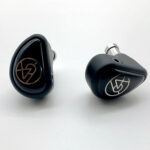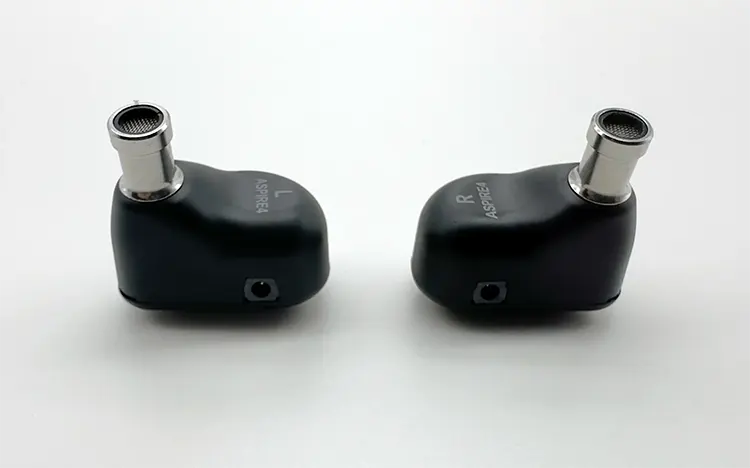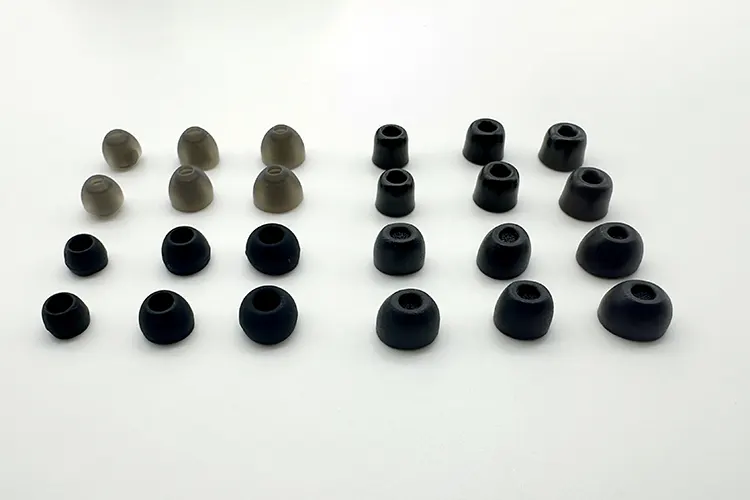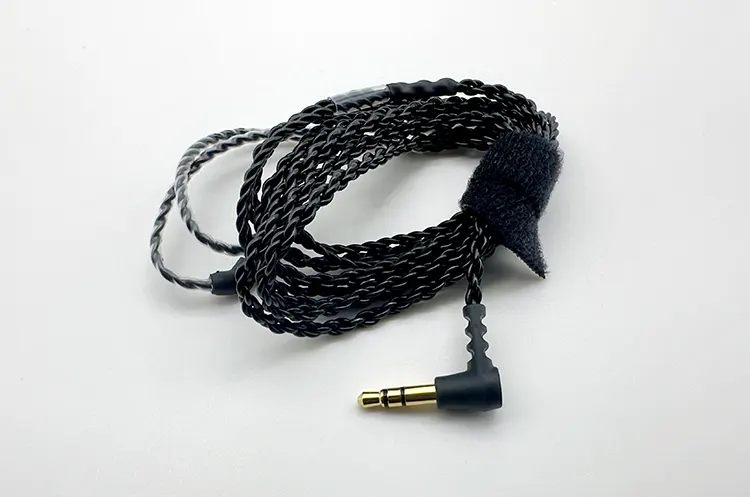Today, Nihal reviews the 64 Audio Aspire 4, the company’s most affordable quad driver IEM designed for musicians and live music professionals. It is priced at $899.
Disclaimer: The sample sent to me is a plan sample and will be returned after this review. Headfonics is an independent website with no affiliate links or status. We thank 64 Audio for their support.
You can click here to learn more about 64 Audio products previously covered on Headfonics.
Note that this article follows our current scoring guidelines, which you can read in more detail here.
The 64 Audio Aspire 4 stands out as the company’s only UIEM designed and tuned specifically for musicians and live-audio professionals, diverging from the focus typically found in audiophile and high-end audio circles.
This alternative is not only meant to meet the monitoring needs of professionals but also aims to provide a high standard of performance.
While the Aspire 4 may not fit the traditional definition of a “budget” IEM by current standards, it currently serves as the current entry point into the 64 Audio UIEM lineup.
The Aspire 4 is equipped with a nice array of features found in other high-end releases, positioning it as a good contender in the audiophile world too. Let’s explore its offerings and see how it competes in today’s market.
Features
The Aspire 4, despite being the most affordable universal IEM from 64 Audio, boasts an impressive array of technical features, including Apex Core, LID, and a waveguide.
It utilizes three balanced armature drivers and one dynamic driver, configured through an integrated electronic 3-way crossover network. The dynamic driver handles low frequencies, while two BA drivers cover the midrange, and one BA driver addresses high frequencies.
The dynamic driver in the Aspire 4 is the same as the previously reviewed Nio, a 9-driver universal IEM featuring Apex, LID, and tia technology. However, unlike the Nio, the Aspire 4 does not use tia technology for high frequencies.
The Aspire 4 is the only current 64 Audio UIEM that does not use the tia driver. Instead, 64 Audio has developed a waveguide technology, a custom-designed acoustic structure for the BA driver, enhancing its efficiency by directing and focusing its energy for a crisp and clear sound.
Apex Core, also used in the 64 Audio Duo, achieves pressure relief with a different internal structure and material compared to standard Apex technology. The Aspire 4’s Apex Core technology is built-in rather than an interchangeable module.
Additionally, the Aspire 4 features LID (Linear Impedance Design), a proprietary circuit that corrects the non-linear impedances of the drivers, ensuring proper interaction with the source and preserving the desired sound signature.
In essence, LID ensures a consistent and linear sound signature regardless of the source’s output impedance.
Design
With the Aspire 4, 64 Audio has focused on simplicity while delivering a nice experience. The Aspire 4 stands out with its unique design, featuring a distinct shape and outer material that differentiate it from the rest of the 64 Audio lineup. It is constructed with an ABS molded shell and a stainless-steel tip.
The ABS shell provides a durable, protective housing that can endure regular use and impacts, all while maintaining a lightweight feel for user comfort. Unlike most of 64 Audio’s UIEMs, which typically feature aluminum shells, the Aspire 4 is the first to use ABS.
This material is lighter, making the Aspire 4 more suitable for live music performances that require extended wear compared to the heavier aluminum shells. In terms of durability, aluminum still leads, but the ABS is much better than resin shells.
The stainless-steel nozzle, attached to the shell, ensures the durability required for consistent use and easy removal of ear tips. The flange design on the nozzle and mesh grill at the end prevent ear tips from falling off accidentally and keep the sound bore free of debris and dirt.
Comfort & Isolation
The Aspire 4 is designed with comfort and extended use in mind. The shells are the smallest in the 64 Audio lineup, featuring expertly finished corners that eliminate sharp edges or pressure points. Their lightweight construction further enhances comfort, making these IEMs ideal for prolonged use.
The fit is nearly flush, giving the impression that the IEM disappears when worn. The shells do not protrude, and from a distance, they are almost invisible when they are in my ears. The IEM stays secure during movement without falling out or becoming loose.
The Aspire 4 also has a distinctively long nozzle, which is uncommon. This longer nozzle allows for deeper insertion and contributes to a more secure fit. The IEMs provide excellent noise isolation due to their snug fit, effectively blocking external sounds.
Each shell includes a vent to relieve pressure buildup, preventing any discomfort. Additionally, I have not experienced any driver flex with the Aspire 4.
Ear Tips
The Aspire 4 has an extensive selection of ear tips, totaling 12 pairs in various sizes to ensure an optimal fit for every user. Among the silicone tips, there are two distinct types. One set features a narrow bore with a longer stem, and these tips are dark grey.
The other set has a wider bore and shorter stems, with a black color. Given the long nozzle of the Aspire 4 IEM, I find the narrow bore tips more suitable.
They provide a comfortable and snug fit. The wide bore tips have stems smaller than the nozzle of the IEM, which I did not find a good fit for.
There are two different sets of foam tips, too. There is one standard foam ear tips set and a set of Comply Oval foam tips (TOZ-500). While I am not a big fan of foam tips, the Comply Oval ear tips are surely interesting and a nice addition. I find it has a good fit and sticks for a longer period too.
These ear tips include TechDefender, an acoustically transparent foam that protects IEMs from wax, sweat, debris, and moisture. These tips are quite good at blocking outside noise.
Noticeably, the silicon tips have a better bass response than the foam tips. In terms of durability, the silicone tips have an edge too.
Stock Cable
The stock cable on the Aspire 4 is a genuine Estron IPX-terminated cable. While the IPX system is not widely popular in the typical audiophile community, it is extensively used in professional monitoring and stage performances.
Brands like Ultimate Ears often use the IPX connection across many of their models. For instance, in our previous review of the Ultimate Ears UE5 Pro, we highlighted the use of the IPX system.
The IPX connection system is designed to withstand humid and challenging environments, offering superior reliability and water resistance. This simple yet robust system is easier to use than MMCX connectors and appears more durable than the 0.78mm 2-pin method.
The cable features a 90-degree angled 3.5mm jack. The internal wires are Silver Plated Oxygen-Free Copper, which provides lower resistance than tinsel and most Litz cables. The cable is supple and lightweight, ensuring no pressure is exerted on the ears during use.
While I do not have major complaints about a different connection system, a modular cable with a 4.4mm termination would offer greater versatility. The package also includes a 1/4-inch stereo jack adapter that accepts a 3.5mm stereo plug, allowing the IEMs to be used with audio sources that use a 1/4-inch jack.
Packaging & Accessories
The Aspire 4 arrives in a standard-shaped box that strikes a perfect balance between size and functionality. The unboxing experience is minimalistic and straightforward, reflecting 64 Audio’s consistent approach to optimizing space while maintaining simplicity.
Upon opening the box, you’ll find the IEMs neatly attached to the cable, securely placed in a foam cutout in the upper half of the box. The lower half houses a carry case that fits perfectly in the remaining space, containing all the additional accessories.
The foam used in the packaging is notably firm, ensuring the contents are securely protected and preventing any movement or potential damage during transit.
The accessories with the Aspire 4 include:
- Carry Case
- Foam Tips + Silicone Ear Tips
- Comply Oval Foam Tips
- IPX Cable
- Cleaning Tool
- 1/4″ Adapter
- Shirt Clip
- 64 Audio sticker
Carry Case
The carry case included with the Aspire 4 is a soft zipper case with ample space for the IEMs and a few extra ear tips. It features a screen-printed 64 Audio logo on the exterior and includes a mesh pouch inside for additional storage.
The compact size of the IEM shells allows them to fit easily into the case, making it convenient for transport. This case is small enough to fit comfortably in a pocket, ensuring portability.
However, it’s important to note that the case is soft and not crush-proof, which means it doesn’t offer robust protection against heavy pressure or impact.
While it is perfect for everyday use and provides adequate storage, it should not be relied upon as a protective case for more rigorous conditions.
Sound Impressions
The following sound impressions of the 64 Audio Aspire 4 were completed using a mixture of my main source, Lotoo’s Paw Gold Touch, and occasionally the Earmen Angel DAC/amp and the Questyle CMA18P. I paired the IEMs with stock cable and the stock ear tips, size M.
Summary
The Aspire 4, though designed with professional monitoring and stage performances in mind, stays true to the signature 64 Audio sound. Drawing parallels from the other universal IEM offerings from the brand, the Aspire 4 remains quite musical and introduces a nice fun factor too.
The sound signature is V-shaped, emphasizing bass and providing a pleasant warmth. It also offers impressive technical capabilities, particularly its class-leading imaging.
The sound is transparent, staying true to the source with minimal coloration. In addition to its suitability for critical listening and monitoring, the Aspire 4 excels in gaming applications.
Bass
The bass on the Aspire 4 emphasizes the mid-bass and includes a decent level of sub-bass. Compared to other 64 Audio IEMs, the Aspire 4’s mid-bass presence is noticeably more pronounced. For instance, the Fourte and Trio offer a deeper bass body with a significant sub-bass impact.
The bass greatly enhances the musicality of the Aspire 4. It has a pleasant warmth and a rich texture that add depth to the listening experience. Importantly, the bass is well-balanced and does not overshadow the upper frequencies.
This ensures that the midrange and treble regions remain clear and detailed, preserving the overall fidelity and allowing each element of the music to shine through.
The Aspire 4’s bass quantity is pleasant and satisfying overall. While it might not cater to bass enthusiasts who crave overwhelming bass, the impact and thump are respectable.
The sub-bass performs well when required by a track, although its quantity can feel somewhat lacking. However, for most listeners, the bass response of the Aspire 4 should be more than adequate, providing a balanced and enjoyable listening experience.
Midrange
The midrange on Aspire 4 is warm and transparent and has a nice clarity to it. The timbre stands out with a natural feel.
The forward positioning of the midrange brings it closer to the ears, making vocals particularly prominent. Vocals have a rich, dense texture with excellent body and extension, offering the quality expected from a professional monitor.
The lower mids are rich and lush, and the frequency remains flat through the midrange. There is some thinness and a little sharpness in the upper midrange, though nothing bothersome. The transition from midrange to treble region is somewhat inconsistent.
While the midrange offers great clarity and a decent level of detailing, there is certainly some room for improvement. On busy tracks, when there are a lot of instruments in the scene, some of the details do not shine out.
Treble
The Aspire 4 offers a clean and detailed treble. I like how well-controlled this treble definition is without a hint of sharpness or sibilance, which makes it ideal for longer usage.
The focus is more on the lower treble, which is boosted for the higher treble frequencies. This enhances the presence and clarity of vocals and instruments like guitars and pianos.
However, the upper treble lacks energy and extension, resulting in a sound that lacks some airiness and sparkle. Consequently, the overall sound does not feel very expansive or open.
Staging & Dynamics
The Aspire 4 soundstage offers impressive depth, though it doesn’t span very wide. The presentation is not particularly holographic; instead, the stage feels closer to the ear and less spacious.
However, the imaging of the Aspire 4 is outstanding. From a monitoring perspective, imaging is often more crucial for professional artists than the stage’s width and depth, and the Aspire 4 delivers in this regard.
It accurately positions instruments, providing great clarity in the arrangement and placement. The layering of instruments is also commendable, making it easy to identify individual artists and their positions, even when there are multiple vocalists.
The IEM excels in detail retrieval, offering decent resolution and a clear presentation. However, the soundstage could be more expansive to allow the instruments more breathing space.
Click on page 2 below for my recommended pairings and selected comparisons.








